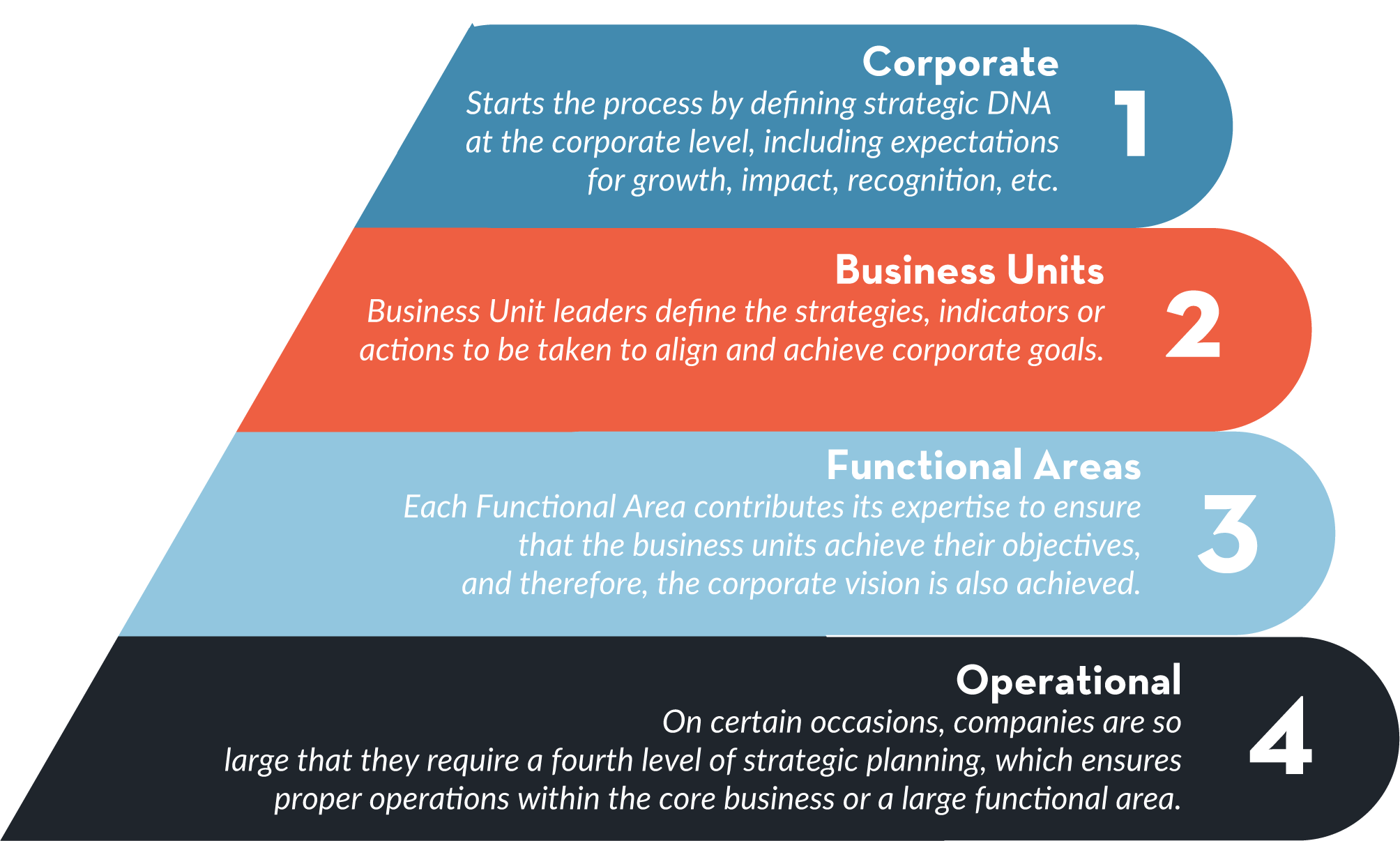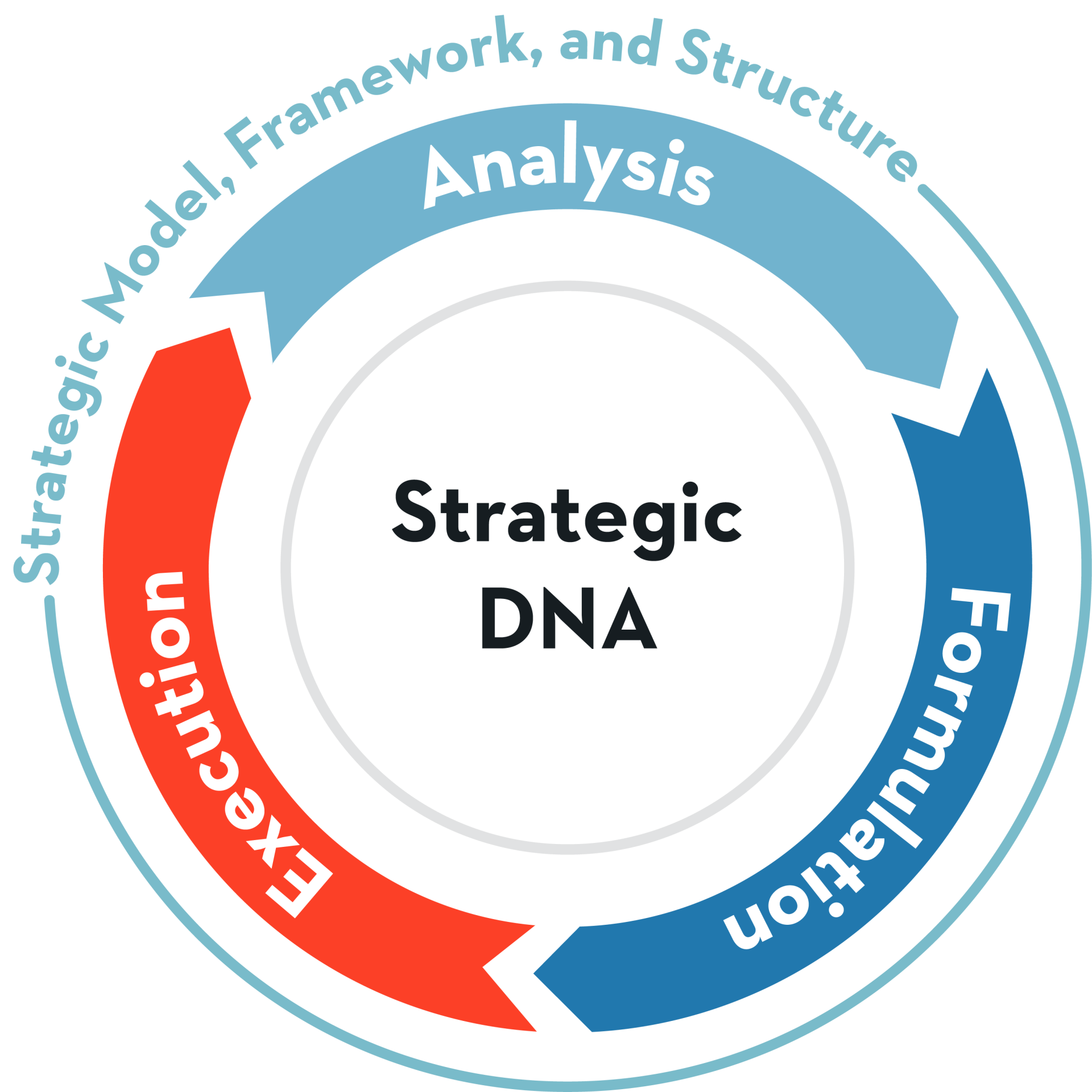In today's fierce and competitive business arena the effectiveness of your strategy becomes pivotal for ensuring the enduring success of your organization. But what exactly defines an effective strategy? How do I know I have one? And what steps can I take to create one? In this article, we'll explore the idea of strategic management and how the PurposeLab Strategy Model can aid in developing an effective strategy.
What do we mean by Strategic Management?
Simply put, strategic management is the process of identifying an organization's long-term objectives and devising an action plan to achieve those goals. It involves monitoring and evaluating strategy effectiveness and making adjustments when necessary. You see, strategic management isn’t just about setting the right goals; it serves as a roadmap, guiding the organization's long term objectives and purpose.
Strategic management operates through four tiers, each demanding distinct objectives and a unique rhythm of governance: corporate level, business level, functional level, and operational level.

Corporate level: the corporate level is the topmost tier. This is where the strategic objectives are crafted and chosen. The corporate level sets the course and provides all other levels with direction. At this level, the organization's strategic framework is defined, establishing the foundation upon which the rest of the company’s operations, decisions, and strategies are built.
Business level: The business level comprises distinct business units, which can vary based on your organization's structure—these might encompass brands, geographical units, or service lines. This tier is entrusted with receiving strategic directives from the corporate level and refining these into more targeted objectives that directly influence each unit's performance.
Functional level: This level embodies the various departments or functions within each business unit, such as marketing, finance, human resources, or research and development (R&D). Here, strategies crafted at the business level are translated into functional plans and actions. The functional level ensures that these plans align with broader business objectives while focusing on the efficient execution of tasks within each department.
Operational level: At this level, the focus zooms in on the day-to-day operations of the organization. It involves the execution of plans formulated by the functional level. Operational decisions, often tactical in nature, are made here to ensure the smooth running of processes, production, customer service, and other core activities. This level's primary goal is to implement strategies and achieve specific objectives set forth by the functional level.
It's crucial to recognize that all four hierarchical levels are often more present in larger organizations. Conversely, smaller businesses might streamline these tiers, potentially merging the business and functional levels into a single tier. This is because in small to medium-sized companies, the delineation between the business and functional levels might not be as distinct.
Strategic management is about understanding and unraveling the intricate interplay among these levels within your specific organizational structure. This comprehension allows you to seamlessly align each tier with its corresponding goals and objectives, irrespective of the size or complexity of your organization.
Strengthen your strategy by connecting your organizational structure
Crafting an effective strategy hinges on multiple factors, notably alignment with the organization's values, culture, and prevailing market and industry trends. Realism and feasibility concerning available resources and capabilities are pivotal. Adaptability is crucial, allowing the organization to pivot in response to market and industry changes.
To achieve this, consider your organizational structure. It's vital to establish logical connections between corporate-level objectives and other organizational tiers. Ensuring synchronization across the organization with the strategy and its plans is complex. A practical way to verify alignment across levels is by employing an "if-then" test. Start at the lowest level, questioning if achieving operational objectives would impact functional ones. A positive answer confirms a logical connection between these levels' objectives. This synchronization is fundamental for effective strategy execution.
The purpose lab strategy model
The PurposeLab Strategic Model serves as a tool to craft impactful strategies. Our philosophy emphasizes the potency of creativity in strategy, empowering businesses with the tools to unlock their competitive advantage through innovative ideas and solutions. Our approach is decided into five stages:
1. Foundations
2. Strategic DNA
3. Analysis
4. Formulation
5. Implementation

Our conversation about organizational structure falls into the first step of the strategic definition process, laying the foundations. Within this step there are three things we must do: define a strategic framework, model, and organizational structure.
Defining these three elements are crucial steps in ensuring a successful design of your strategic plan. If you'd like to learn more about our approach at strategy formulation, head over to our website by clicking here and watch our free introductory video. Then, check out our events and talk to us live during our webinars.




